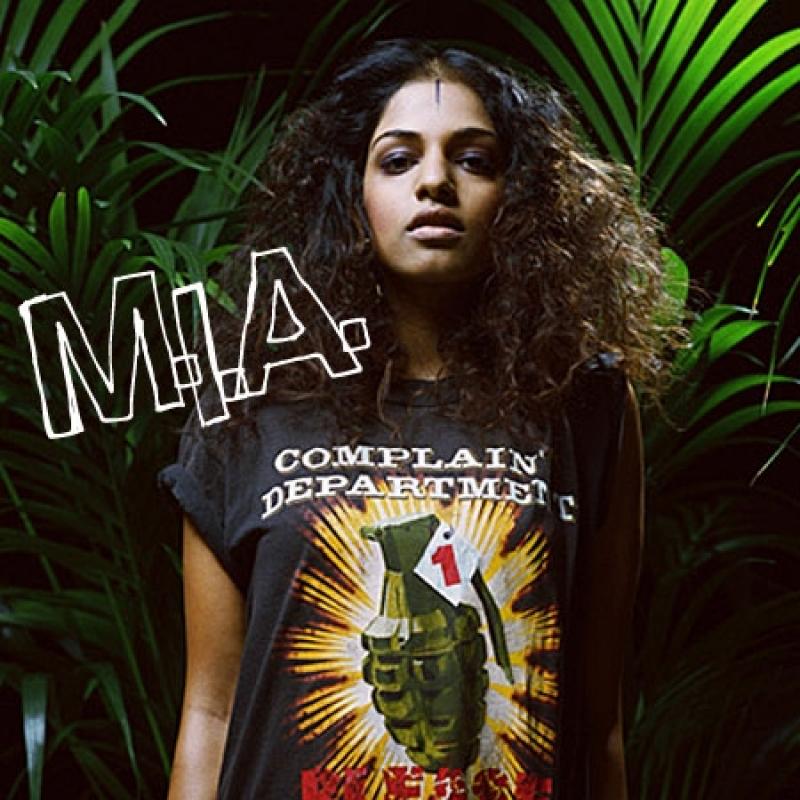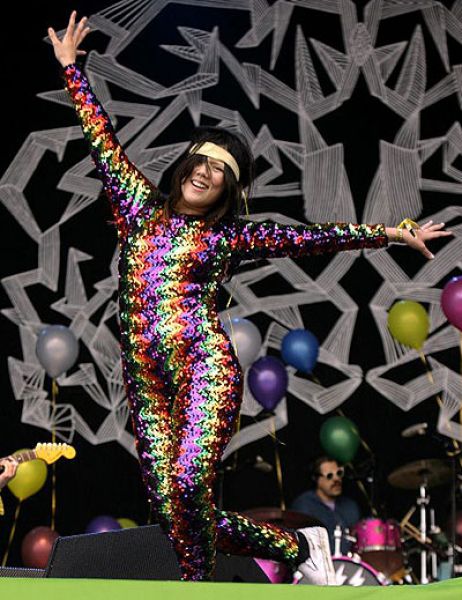Pop Music 2000-9: The Triumph of the Noughty Girls | reviews, news & interviews
Pop Music 2000-9: The Triumph of the Noughty Girls
Pop Music 2000-9: The Triumph of the Noughty Girls
Girl power was beefier than ever in the Noughties

The girls have produced the best pop of the Noughties: Kylie’s “Can’t get you out of my Head”, Missy Elliot's “Get Ur Freak On”, Beyoncé’s “Crazy in Love”, Amy Winehouse’s “Rehab”, Duffy’s “Warwick Avenue” and Lady Gaga's "PokerFace" were just way better and more innovative pop music than that produced by the legion of blokey indie types (with a few honourable exceptions, like the Arctic Monkeys
This is the first decade in which the females decisively won at pop since the dawn of rock'n'roll. In the Noughties, much of what the male bands did was forgettable and retrogressive: Oasis, U2 and Radiohead were past their peak, while Snow Patrol and their dirgy ilk were never there in the first place. Only occasional flashes of hip-hop from Eminem and Kanye West pushed into new pop territory,while the most fertile electronica action was mainly underground, as Joe Muggs writes elsewhere. While several male veterans like Neil Young, Tom Waits, Leonard Cohen and Bob Dylan had something of an artistic Indian summer, classing them as pop would seem to be to many to be almost sacrilegious, and, in any case, one could hardly call the Noughties their creative zenith.
 The best boy band of the Noughties was improbably Take That, returning from the Nineties to claim an empty throne, while girl groups like the Sugababes produced impeccable pop, and the Brazilian girl group CSS (pictured)- Cansei de Ser Sexy, or Tired of Being Sexy (weren’t we all?) - fizzed in a way that made their male counterparts look dull and predictable.
The best boy band of the Noughties was improbably Take That, returning from the Nineties to claim an empty throne, while girl groups like the Sugababes produced impeccable pop, and the Brazilian girl group CSS (pictured)- Cansei de Ser Sexy, or Tired of Being Sexy (weren’t we all?) - fizzed in a way that made their male counterparts look dull and predictable.
If you think of the decades since the dawn of rock'n'roll, the very first names you think of are probably men. There was Elvis in the Fifties. The Beatles and Stones dominated in the Sixties (although here girls ran a close second). Led Zeppelin, the Bee Gees and various punk blokes lorded it over the Seventies. The Eighties saw Michael Jackson trouncing everyone - even Madonna - while the Nineties brought us Blur, Oasis, Take That and Robbie. The Spice Girls ushered in the decade of girl pop. Admittedly much of the music was made or produced by men, so they weren't completely without their uses. But the best artists - from M.I.A. through Camille to Bjork - were nobody’s ciphers.
In other areas of music the girls came up trumps in the Noughties too – from world music stars like Cesaria Evora, to younger visionaries like Lhasa (see video below), Ceu, Mayra Andrade and Susheela Rahman. Only a few male artists who appeared on the European radar had similarly powerful and original visions - notably Manu Chao's Proxima Estacion -Esperanza and his sparkling production of Amadou and Mariam's Dimanche A Bamako, Ali Farka Toure's Savanne and Youssou N'Dour's wholly original Egypt. In jazz Melody Gardot, Norah Jones, Diana Krall and Madeleine Peyroux cleaned up and sold millions, far outpacing their male colleagues, while in folk music the likes of The Unthanks and Julie Fowlis were managing to fuse tradition and the modern world in a new way, Fowlis at the forefront of a new wave of Scottish Gaelic music, the forgotten language of popular music in these islands. Even in that most male bastion of classical composition, the likes of Kaija Saariaho and Jocelyn Pook made a significant dent. So I raise a toast to the Noughty Girls: the champions of the decade.
Watch Lhasa "Con Todo Palabra"
{youtube width="400"}uGNk_zHy4Mg{/youtube}
The future of Arts Journalism
You can stop theartsdesk.com closing!
We urgently need financing to survive. Our fundraising drive has thus far raised £49,000 but we need to reach £100,000 or we will be forced to close. Please contribute here: https://gofund.me/c3f6033d
And if you can forward this information to anyone who might assist, we’d be grateful.

Subscribe to theartsdesk.com
Thank you for continuing to read our work on theartsdesk.com. For unlimited access to every article in its entirety, including our archive of more than 15,000 pieces, we're asking for £5 per month or £40 per year. We feel it's a very good deal, and hope you do too.
To take a subscription now simply click here.
And if you're looking for that extra gift for a friend or family member, why not treat them to a theartsdesk.com gift subscription?
more New music
 Solar Eyes, Hare & Hounds, Birmingham review - local lads lay down some new tunes for a home crowd
Psychedelic indie dance music marinated in swirling dry ice
Solar Eyes, Hare & Hounds, Birmingham review - local lads lay down some new tunes for a home crowd
Psychedelic indie dance music marinated in swirling dry ice
 The Lemonheads' 'Love Chant' is a fine return to form
Evan Dando finally gets back in the saddle with an album of new tunes
The Lemonheads' 'Love Chant' is a fine return to form
Evan Dando finally gets back in the saddle with an album of new tunes
 Music Reissues Weekly: Evie Sands - I Can’t Let Go
Diligent, treasure-packed tribute to one of Sixties’ America’s great vocal stylists
Music Reissues Weekly: Evie Sands - I Can’t Let Go
Diligent, treasure-packed tribute to one of Sixties’ America’s great vocal stylists
 'Deadbeat': Tame Impala's downbeat rave-inspired latest
Fifth album from Australian project grooves but falls flat
'Deadbeat': Tame Impala's downbeat rave-inspired latest
Fifth album from Australian project grooves but falls flat
 Heartbreak and soaring beauty on Chrissie Hynde & Pals' Duets Special
The great Pretender at her most romantic and on the form of her life
Heartbreak and soaring beauty on Chrissie Hynde & Pals' Duets Special
The great Pretender at her most romantic and on the form of her life
 The Last Dinner Party's 'From the Pyre' is as enjoyable as it is over-the-top
Musically sophisticated five-piece ramp up the excesses but remain contagiously pop
The Last Dinner Party's 'From the Pyre' is as enjoyable as it is over-the-top
Musically sophisticated five-piece ramp up the excesses but remain contagiously pop
 Moroccan Gnawa comes to Manhattan with 'Saha Gnawa'
Trance and tradition meet Afrofuturism in Manhattan
Moroccan Gnawa comes to Manhattan with 'Saha Gnawa'
Trance and tradition meet Afrofuturism in Manhattan
 Soulwax’s 'All Systems Are Lying' lays down some tasty yet gritty electro-pop
Belgian dancefloor veterans return to the fray with a dark, pop-orientated sound
Soulwax’s 'All Systems Are Lying' lays down some tasty yet gritty electro-pop
Belgian dancefloor veterans return to the fray with a dark, pop-orientated sound
 Music Reissues Weekly: Marc and the Mambas - Three Black Nights Of Little Black Bites
When Marc Almond took time out from Soft Cell
Music Reissues Weekly: Marc and the Mambas - Three Black Nights Of Little Black Bites
When Marc Almond took time out from Soft Cell
 Album: Mobb Deep - Infinite
A solid tribute to a legendary history
Album: Mobb Deep - Infinite
A solid tribute to a legendary history
 Album: Boz Scaggs - Detour
Smooth and soulful standards from an old pro
Album: Boz Scaggs - Detour
Smooth and soulful standards from an old pro
 Emily A. Sprague realises a Japanese dream on 'Cloud Time'
A set of live improvisations that drift in and out of real beauty
Emily A. Sprague realises a Japanese dream on 'Cloud Time'
A set of live improvisations that drift in and out of real beauty

Add comment